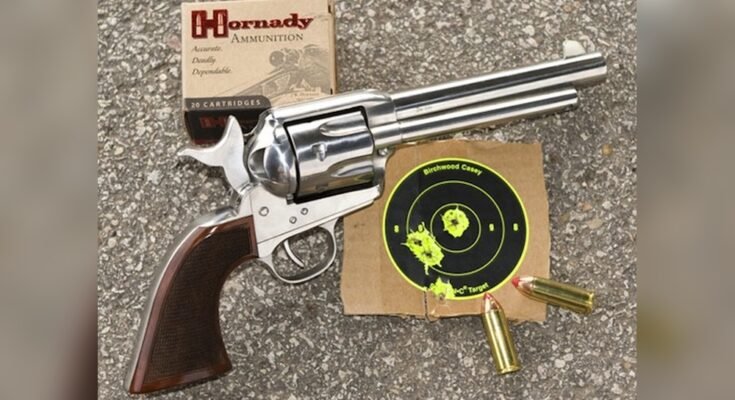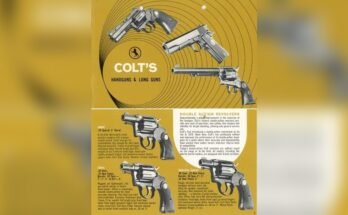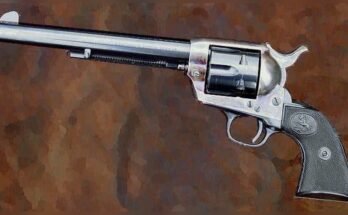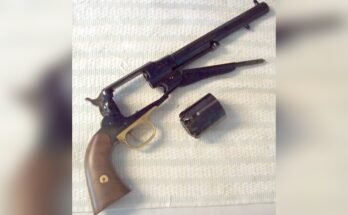Have you ever wondered just how accurate single-action revolvers really are? Whether you’re a seasoned shooter or just curious about these classic firearms, understanding their precision can change how you approach your shooting skills.
You’ll discover the key factors that affect accuracy and what you can expect when you take aim with a single-action revolver. Keep reading to find out if these iconic guns live up to their reputation and how you can get the best performance from yours.

Single-action Revolver Basics
Single-action revolvers have a special place in firearm history. They work differently from modern guns. Understanding their basics helps us see how accurate they can be.
These revolvers require the shooter to pull the hammer back before each shot. This action sets the gun to fire. The design is simple yet effective.
Key Features
Single-action revolvers have a few important parts. The hammer must be cocked by hand before each shot. This step makes the trigger pull light and short.
The cylinder holds the bullets and rotates as the hammer is cocked. This movement aligns the next bullet with the barrel. The barrel guides the bullet out with precision.
Many single-action revolvers have iron sights. These sights help the shooter aim clearly. The simple design means fewer moving parts to affect accuracy.
Historical Significance
Single-action revolvers became popular in the 1800s. They were widely used in the American West. Their reliability made them a favorite for many years.
Famous models like the Colt Single Action Army shaped firearm history. These guns were known for durability and ease of use. They played a key role in law enforcement and military use.
The classic look and function of single-action revolvers still attract collectors and shooters today. Their design influenced many modern firearms.
Factors Affecting Accuracy
Several factors influence how accurate single-action revolvers can be. Understanding these elements helps shooters improve their aim and performance. Accuracy depends on the gun’s build and how the shooter handles it. Each factor plays a role in the final shot placement. Let’s explore the main factors affecting accuracy.
Barrel Length
Barrel length affects bullet speed and stability. Longer barrels offer more time for the bullet to gain velocity. They also provide a longer sight radius, helping shooters aim better. Short barrels are easier to carry but may reduce accuracy at longer distances. Choosing the right barrel length balances portability and precision.
Sight Design
Sights guide the shooter’s eye to the target. Simple fixed sights are common on single-action revolvers. Adjustable sights allow fine-tuning for better precision. Some revolvers have fiber optic or night sights for low light. Clear, easy-to-use sights improve aiming speed and accuracy.
Ammunition Quality
Not all bullets perform the same in single-action revolvers. High-quality ammunition produces consistent velocity and pressure. This consistency leads to tighter groupings on the target. Cheap or old ammo might cause misfires or inaccuracy. Always use reliable ammo for the best results.
Shooter Skill
The shooter’s ability greatly impacts accuracy. Proper grip, breathing, and trigger control matter most. Practicing regularly builds muscle memory and confidence. Even the best revolver needs a skilled shooter to perform well. Patience and focus improve every shot fired.
Common Accuracy Myths
Many people believe single-action revolvers are not very accurate. These ideas come from common myths rather than facts. Understanding these myths helps to see the true accuracy of these guns. Some myths come from old stories or wrong comparisons. Clearing these up shows what single-action revolvers can really do.
Mechanical Limitations
Some say single-action revolvers are not accurate because of their design. These guns have fewer moving parts than others. This simplicity can actually help with accuracy. The hammer must be cocked before each shot. This action creates a crisp trigger pull. A crisp trigger pull helps shooters hit targets better. The barrel is fixed to the frame, which adds stability. This setup reduces wobble and movement during shooting. So, mechanical limits do not stop accuracy here.
Revolver Vs. Semi-automatic
Many compare single-action revolvers to semi-automatic pistols. Semi-automatics reload faster and have higher capacity. Some think this means they are more accurate. Accuracy depends on many factors, not just type. Single-action revolvers often have longer barrels. Longer barrels can improve sight radius and accuracy. Semi-automatics might have more recoil control. But single-actions are easier to hold steady. Both types can be accurate with good shooting skills. The choice does not decide accuracy alone.

Performance In Different Conditions
Single-action revolvers show different accuracy depending on the conditions they face. Their performance changes with the shooting range and the environment. Understanding these factors helps shooters know what to expect from their firearm.
Range Impact
Accuracy drops as distance increases. Single-action revolvers work best at short to medium ranges. Around 25 yards, these guns can hit targets reliably. Beyond 50 yards, accuracy becomes less consistent. The fixed sights and barrel length limit precision at long distances. For closer shots, they offer good control and steady aim.
Environmental Factors
Weather affects single-action revolver accuracy. Wind can push bullets off course, especially at longer ranges. Rain or humidity might change how the gun feels and shoots. Cold temperatures can slow powder burn, affecting bullet speed. Hot weather can increase pressure inside the barrel. Dust and dirt can interfere with the gun’s mechanism. Regular cleaning helps maintain performance in tough conditions.
Comparison With Other Firearms
Single-action revolvers have a unique place in firearm history. Their accuracy often sparks debate. Comparing them with other firearms helps understand their true performance. Accuracy depends on many factors like design, trigger, and user skill. Let’s explore how single-action revolvers stack up against other common guns.
Double-action Revolvers
Double-action revolvers offer a different shooting style. They allow firing by simply pulling the trigger. This can affect accuracy because the trigger pull is heavier. Single-action revolvers have a lighter, crisper trigger pull. This often helps shooters aim better. Double-action guns can be faster to shoot but less precise. For target shooting, single-action revolvers usually have an edge in accuracy. For quick shots, double-action models may be preferred.
Modern Pistols
Modern pistols often use semi-automatic mechanisms. They provide faster follow-up shots than revolvers. These pistols have shorter trigger pulls and less recoil. These features can improve accuracy in rapid fire. Single-action revolvers need manual cocking before each shot. This can slow the shooting process. Modern pistols have better sights and ergonomics. These help shooters maintain better aim. Overall, modern pistols tend to be more accurate for fast shooting. Single-action revolvers excel in slow, precise shooting.
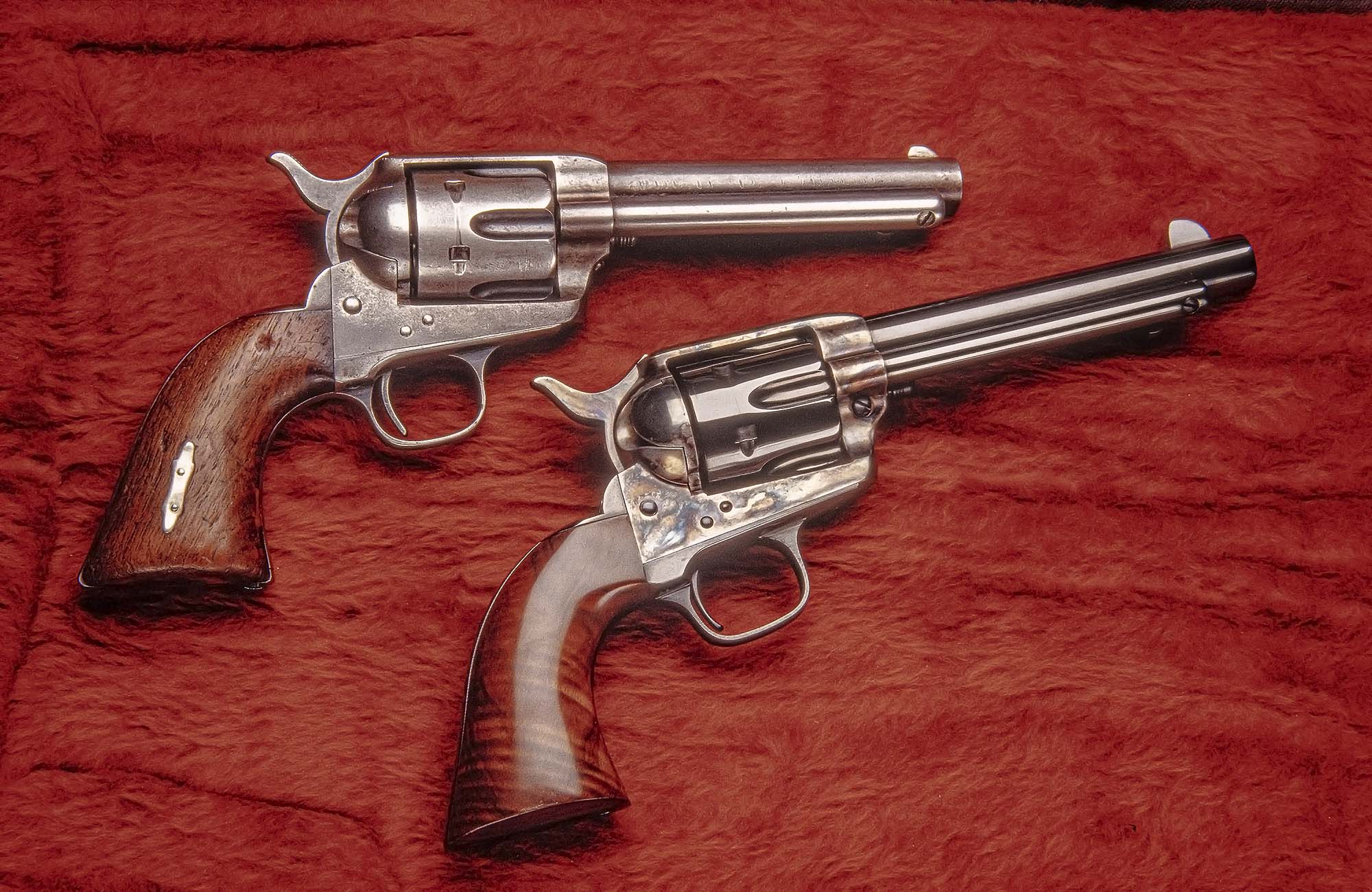
Improving Single-action Accuracy
Improving the accuracy of single-action revolvers is possible with the right adjustments and practice. Small changes to the gun and the shooter’s habits can make a big difference. These improvements help shooters hit targets more consistently and with greater confidence.
Customization Options
Many single-action revolvers allow customization to boost accuracy. Changing the sights to adjustable or fiber optic types helps with better aiming. Installing a better trigger can make the pull smoother and lighter. Upgrading the barrel or cylinder fit reduces wobble and improves stability. Custom grips provide a more secure hold and reduce recoil movement. Each of these changes can help the shooter control the gun better and shoot straighter.
Training Techniques
Good training is key to improving accuracy with single-action revolvers. Regular dry firing builds muscle memory without using ammo. Practicing proper grip and stance improves control and steadiness. Slow, deliberate trigger pulls prevent jerking and maintain aim. Shooting at varied distances trains the eyes and hands to adjust. Keeping a steady breathing rhythm helps keep the gun steady. These training steps create habits that improve shooting over time.
Real-world Usage And Testimonials
Real-world use shows how accurate single-action revolvers really are. Stories from users reveal their true performance. These revolvers have a long history and remain popular among shooters today. Both past and present marksmen share insights on accuracy and handling. Their experiences help us understand what to expect from these firearms.
Historical Marksmen
Famous shooters in the past trusted single-action revolvers for precision. Many used them in competitions and on the frontier. Their success came from practice and the revolver’s design. Historical accounts often praise the steady aim and reliability. These guns were tools for hunting and defense. Marksmen noted that accuracy depended on good technique and patience. They showed that single-action revolvers could hit targets at moderate distances with care.
Contemporary Shooters
Today’s shooters also share their views on these revolvers. They use them in sport shooting, cowboy action events, and personal collections. Many report consistent accuracy at short to medium ranges. Some find the single-action trigger allows precise control. Users mention the importance of quality ammunition and clean mechanisms. Modern shooters confirm that with practice, these guns can be very accurate. Their feedback highlights the blend of tradition and skill needed for best results.
Frequently Asked Questions
How Accurate Are Single-action Revolvers For Target Shooting?
Single-action revolvers offer good accuracy for target shooting. Their fixed barrels and simple mechanisms enhance precision. Proper maintenance and quality ammunition also improve consistency and shot placement.
Do Single-action Revolvers Perform Well At Long Distances?
Single-action revolvers can be accurate at moderate distances but may struggle beyond 50 yards. Barrel length and sight quality influence long-range accuracy.
What Factors Affect Single-action Revolver Accuracy?
Accuracy depends on barrel length, ammunition type, sight alignment, and shooter skill. Regular cleaning and maintenance also play crucial roles.
How Does Single-action Accuracy Compare To Semi-automatic Pistols?
Single-action revolvers are generally less accurate than semi-automatic pistols at rapid fire. However, they excel in precision for slower, deliberate shots.
Conclusion
Single-action revolvers offer good accuracy for many shooters. Their simple design helps users aim steadily and shoot precisely. Practice improves accuracy more than the gun itself. Ammunition quality also affects how well shots land. These revolvers suit target shooting and casual hunting well.
Expect consistent performance with proper care and skill. Accuracy depends on both the shooter and the firearm. Try different models to find one that fits you best. Simple, reliable, and accurate—single-action revolvers still hold their charm.
